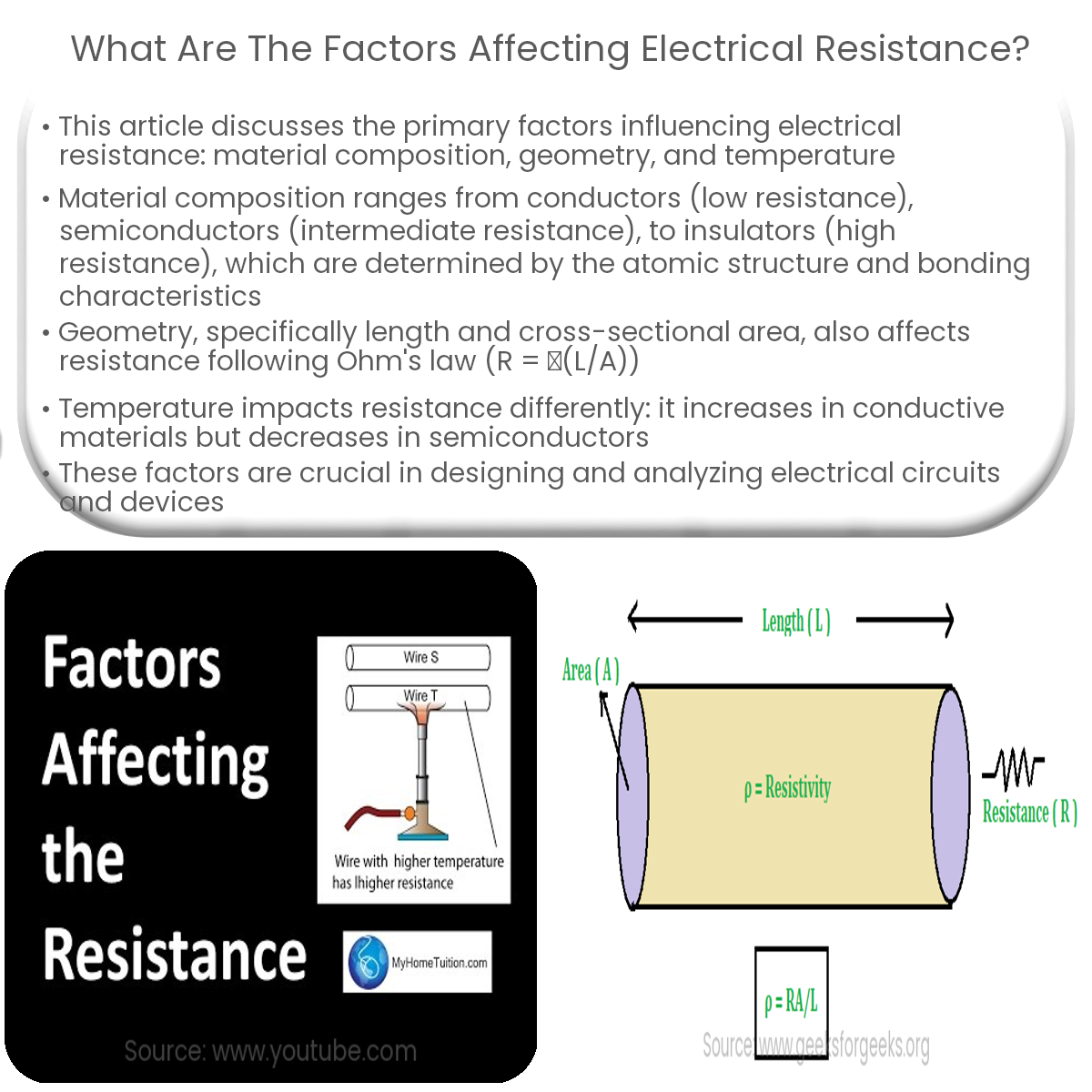Electrical resistance is affected by material composition, geometry (length and cross-sectional area), and temperature, impacting circuit and device performance.
Factors Affecting Electrical Resistance
Electrical resistance is a property of materials that quantifies their opposition to the flow of electric current. The resistance of a material can be influenced by several factors, which are essential to consider when designing electrical circuits and devices. This article discusses the primary factors that affect electrical resistance, including material composition, geometry, and temperature.
Material Composition
The composition of a material significantly affects its electrical resistance. Materials can be broadly categorized into conductors, semiconductors, and insulators based on their electrical properties:
- Conductors: Materials with low resistance, such as metals (e.g., copper, silver, and aluminum), which allow electric current to flow easily.
- Semiconductors: Materials with intermediate resistance, such as silicon and germanium, whose conductivity can be controlled by doping or other external factors.
- Insulators: Materials with high resistance, such as rubber, glass, and most plastics, which impede the flow of electric current.
The atomic structure and bonding characteristics of a material determine its resistance. In general, materials with a high density of free charge carriers, such as metals, exhibit lower resistance.
Geometry
The geometry of a material, specifically its length (L) and cross-sectional area (A), also affects its electrical resistance. According to Ohm’s law, the resistance (R) of a uniform material can be calculated using the following formula:
R = ρ(L/A)
Where ρ is the resistivity of the material, a property intrinsic to the material. From this equation, we can infer that resistance is directly proportional to the length of the material and inversely proportional to its cross-sectional area. Longer and thinner materials will have higher resistance, while shorter and thicker materials will have lower resistance.
Temperature
Temperature is another key factor that influences electrical resistance. In most conductive materials, such as metals, resistance typically increases with rising temperature. As temperature increases, atoms within the material vibrate more vigorously, leading to more frequent collisions with charge-carrying electrons and impeding electron flow.
Conversely, in semiconductor materials, resistance generally decreases with increasing temperature due to the increased availability of charge carriers and enhanced carrier mobility. Insulating materials exhibit a wide range of temperature-dependent resistance behaviors.
Conclusion
Understanding the factors affecting electrical resistance is essential for designing and analyzing electrical circuits and devices. Material composition, geometry, and temperature are the primary factors that influence resistance, and engineers must consider these variables when selecting materials and designing circuits to ensure optimal performance and reliability.


